Translation of text into digital code. Russian alphabet in binary code. Uniform alphabetic binary encoding. Byte Code Create Binary Code Online
Computers don't understand words and numbers the way people do. Modern software allows the end user to ignore this, but at the lowest levels your computer operates on a binary electrical signal that has only two states: whether there is current or not. To "understand" complex data, your computer must encode it in binary format.
The binary system is based on two digits, 1 and 0, corresponding to on and off states that your computer can understand. You are probably familiar with the decimal system. It uses ten digits, from 0 to 9, and then moves on to the next order to form two-digit numbers, with each number being ten times larger than the previous one. The binary system is similar, with each digit being twice as large as the previous one.
Counting in binary format
In binary expression, the first digit is equivalent to 1 in the decimal system. The second digit is 2, the third is 4, the fourth is 8, and so on - doubling each time. Adding all these values will give you the number in decimal format.
1111 (in binary) = 8 + 4 + 2 + 1 = 15 (in decimal)
Accounting for 0 gives us 16 possible values for four binary bits. Move 8 bits and you get 256 possible values. This takes up a lot more space to represent since four decimal digits gives us 10,000 possible values. Of course, binary code takes up more space, but computers understand binary files much better than the decimal system. And for some things, like logic processing, binary is better than decimal.
It should be said that there is another basic system that is used in programming: hexadecimal. Although computers do not operate in hexadecimal format, programmers use it to represent binary addresses in a human-readable format when writing code. This is because two digits in a hexadecimal number can represent a whole byte, meaning they replace eight digits in binary. The hexadecimal system uses the numbers 0-9, as well as the letters A through F, to create an additional six digits.
Why do computers use binary files?
Short answer: hardware and laws of physics. Every character in your computer is an electrical signal, and in the early days of computing, measuring electrical signals was much more difficult. It made more sense to distinguish only the "on" state, represented by a negative charge, and the "off" state, represented by a positive charge.
For those who don't know why "off" is represented by a positive charge, it is because electrons have a negative charge, and more electrons mean more current with a negative charge.
Thus, early room-sized computers used binary files to create their systems, and although they used older, bulkier equipment, they worked on the same fundamental principles. Modern computers use what is called transistor to perform calculations with binary code.
Here is a diagram of a typical transistor:

Essentially, it allows current to flow from the source to the drain if there is current in the gate. This forms a binary key. Manufacturers can make these transistors incredibly small—down to 5 nanometers, or the size of two strands of DNA. This is how modern processors work, and even they can suffer from problems distinguishing between on and off states (though this is due to their unrealistic molecular size being subject to the weirdness of quantum mechanics).
Why only binary system
So you might be thinking, “Why only 0 and 1? Why not add another number? Although this is partly due to the traditions of creating computers, at the same time, adding another digit would mean the need to distinguish another state of the current, not just “off” or “on”.
The problem here is that if you want to use multiple voltage levels, you need a way to easily perform calculations on them, and current hardware capable of this is not viable as a replacement for binary calculations. For example, there is a so-called triple computer, developed in the 1950s, but development stopped there. Ternary logic more efficient than binary, but there is not yet an effective replacement for the binary transistor, or at least no transistor on the same tiny scale as binary.
The reason we can't use ternary logic comes down to how transistors are connected in a computer and how they are used for mathematical calculations. The transistor receives information at two inputs, performs an operation, and returns the result to one output.
Thus, binary mathematics is easier for a computer than anything else. Binary logic is easily converted to binary systems, with True and False corresponding to On and Off states.

A binary truth table running on binary logic will have four possible outputs for each fundamental operation. But, since triple gates use three inputs, the triple truth table would have 9 or more. While the binary system has 16 possible operators (2^2^2), the ternary system would have 19683 (3^3^3). Scaling becomes an issue because while trinity is more efficient, it is also exponentially more complex.
Who knows? In the future, we may well see ternary computers as binary logic faces miniaturization challenges. For now, the world will continue to operate in binary mode.
Binary code decoding is used to translate from machine language to regular language. Online tools work quickly, although it is not difficult to do it manually.
Binary or binary code is used to transmit information digitally. A set of just two characters, such as 1 and 0, allows you to encrypt any information, be it text, numbers or an image.
How to encrypt with binary code
To manually convert any symbols into binary code, tables are used in which each symbol is assigned a binary code in the form of zeros and ones. The most common encoding system is ASCII, which uses 8-bit code notation.
The basic table shows binary codes for the Latin alphabet, numbers and some symbols.
A binary interpretation of the Cyrillic alphabet and additional characters has been added to the extended table.
To convert from binary code to text or numbers, simply select the desired codes from the tables. But, of course, doing this kind of work manually takes a long time. And mistakes, moreover, are inevitable. The computer copes with decryption much faster. And we don’t even think, while typing text on the screen, that at that moment the text is being converted into binary code.
Converting a binary number to decimal
To manually convert a number from a binary number system to a decimal number system, you can use a fairly simple algorithm:
- Below the binary number, starting with the rightmost digit, write the number 2 in increasing powers.
- The powers of 2 are multiplied by the corresponding digit of the binary number (1 or 0).
- Add the resulting values.
This is what this algorithm looks like on paper:

Online services for binary decryption
If you still need to see the decrypted binary code, or, conversely, convert the text into binary form, the easiest way is to use online services designed for these purposes.
Two windows, familiar to online translations, allow you to almost simultaneously see both versions of the text in regular and binary form. And decryption is carried out in both directions. Entering text is a simple matter of copying and pasting.
Because it is the simplest and meets the requirements:
- The fewer values there are in the system, the easier it is to manufacture individual elements that operate on these values. In particular, two digits of the binary number system can be easily represented by many physical phenomena: there is a current - there is no current, the magnetic field induction is greater than a threshold value or not, etc.
- The fewer states an element has, the higher the noise immunity and the faster it can operate. For example, to encode three states through the magnitude of the magnetic field induction, you will need to enter two threshold values, which will not contribute to noise immunity and reliability of information storage.
- Binary arithmetic is quite simple. Simple are the tables of addition and multiplication - the basic operations with numbers.
- It is possible to use the apparatus of logical algebra to perform bitwise operations on numbers.
Links
- Online calculator for converting numbers from one number system to another
Wikimedia Foundation. 2010.
See what “Binary code” is in other dictionaries:
2-bit Gray code 00 01 11 10 3-bit Gray code 000 001 011 010 110 111 101 100 4-bit Gray code 0000 0001 0011 0010 0110 0111 0101 0100 1100 1101 1111 111 0 1010 1011 1001 1000 Gray code a number system in which two adjacent values ... ... Wikipedia
Signal Point Code (SPC) of Signal System 7 (SS7, OX 7) is a unique (in the home network) node address used at the third MTP level (routing) in telecommunication OX 7 networks for identification ... Wikipedia
In mathematics, a square-free number is a number that is not divisible by any square except 1. For example, 10 is square-free, but 18 is not, since 18 is divisible by 9 = 32. The beginning of the sequence of square-free numbers is: 1, 2, 3, 5, 6, 7,… … Wikipedia
To improve this article, would you like to: Wikify the article. Rework the design in accordance with the rules for writing articles. Correct the article according to Wikipedia stylistic rules... Wikipedia
This term has other meanings, see Python (meanings). Python Language class: mu... Wikipedia
In the narrow sense of the word, the phrase currently means “Attempt on a security system,” and tends rather to the meaning of the following term, Cracker attack. This happened due to a distortion of the meaning of the word “hacker” itself. Hacker... ...Wikipedia
I decided to make such a tool as converting text into binary code and vice versa, there are such services, but they usually work with the Latin alphabet, but mine the translator works with unicode encoding in UTF-8 format, which encodes Cyrillic characters in two bytes. At the moment, the capabilities of the translator are limited to double-byte encodings, i.e. It’s not possible to translate Chinese characters, but I’m going to correct this annoying misunderstanding.
To convert text to binary representation enter the text in the left window and click TEXT->BIN in the right window its binary representation will appear.
To convert binary code to text enter the code in the right window and press BIN->TEXT; its symbolic representation will appear in the left window.
If translation of binary code into text or vice versa it didn’t work out - check the correctness of your data!
Update!
Reverse text transformation of the form is now available:
back to normal. To do this, you need to check the box: “Replace 0 with spaces, and 1 with placeholder █.” Then paste the text into the right box: “Text in binary representation” and click the button below it “BIN->TEXT”.
When copying such texts you need to be careful because... You can easily lose spaces at the beginning or end. For example, the line at the top looks like:
██ █ █ ███████ █ ██ ██ █ █ ███ ██ █ █ ██ █ ██ █ █ ██ █ ███ █ ██ █ █ ██ █ █ ███ ██ █ █ ███ ██ █ ██
and on a red background:
██ █ █ ███████ █ ██ ██ █ █ ███ ██ █ █ ██ █ ██ █ █ ██ █ ███ █ ██ █ █ ██ █ █ ███ ██ █ █ ███ ██ █ ██
Do you see how many spaces at the end you can lose?
If you're interested in learning how to read binary numbers, it's important to understand how binary numbers work. The binary system is known as a "base 2" numbering system, which means there are two possible numbers for each digit; one or zero. Large numbers are written by adding extra binary ones or zeros.
Understanding Binary Numbers
Knowing how to read binary files is not critical to using computers. But it is good to understand the concept to better understand how computers store numbers in memory. It also allows you to understand terms such as 16-bit, 32-bit, 64-bit and memory measurements such as bytes (8 bits).
"Reading" binary code usually means converting the binary number to the base 10 (decimal) number that people are familiar with. This conversion is fairly easy to do in your head once you understand how a binary language works.
Each digit in a binary number has a specific meaning unless the digit is zero. Once you have determined all of these values, you simply add them together to get the 10-digit decimal value of the binary number. To see how this works, take the binary number 11001010.
1. The best way to read a binary number is to start at the rightmost digit and work left. The strength of this first location is zero, that is, the value for this digit, if it is not zero, is equal to two powers of zero or one. In this case, since the digit is zero, the value for that location will be zero.

2. Then move on to the next digit. If it's one, then calculate two to the power of one. Write down this value. In this example, the value is a power of two equal to two.

3. Continue repeating this process until you reach the leftmost number.

4. To finish, all you have to do is add all these numbers together to get the total decimal value of the binary number: 128 + 64 + 0 + 0 + 8 + 0 + 2 + 0 = 202 .
The note: Another way to see this whole process in equation form is this: 1 x 2 7 + 1 x 2 6 + 0 x 2 5 + 0 x 2 4 + 1 x 2 3 + 0 x 2 2 + 1 x 2 1 + 0 x 2 0 = 20.
Binary numbers with signature
The above method works for unsigned basic binary numbers. However, computers need a way to represent negative numbers also using binary code.
Because of this, computers use signed binary numbers. In this type of system, the leftmost digit is known as the sign bit and the remaining digits are known as amplitude bits.
Reading a signed binary number is almost the same as an unsigned one, with one small difference.
1. Follow the same procedure as above for an unsigned binary number, but stop once you reach the leftmost bit.

2. To determine the sign, look at the leftmost bit. If it is one, then the number is negative. If it is zero, then the number is positive.

3. Now do the same calculations as before, but apply the appropriate sign to the number indicated by the leftmost bit: 64 + 0 + 0 + 8 + 0 + 2 + 0 = -74 .
4. Signed binary method allows computers to represent numbers that are positive or negative. However, it consumes the leading bit, meaning that large numbers require slightly more memory than unsigned binary numbers.


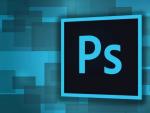
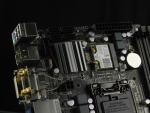
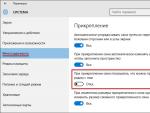
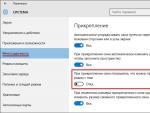
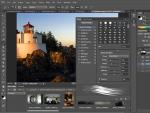
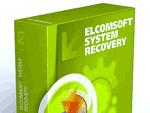
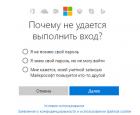 How to recover your Microsoft account password - Step-by-step examples
How to recover your Microsoft account password - Step-by-step examples Extract a page from a PDF file online
Extract a page from a PDF file online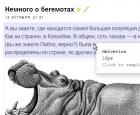 How to unlock a found iPhone
How to unlock a found iPhone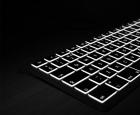 How to type characters and signs that are not on the keyboard
How to type characters and signs that are not on the keyboard